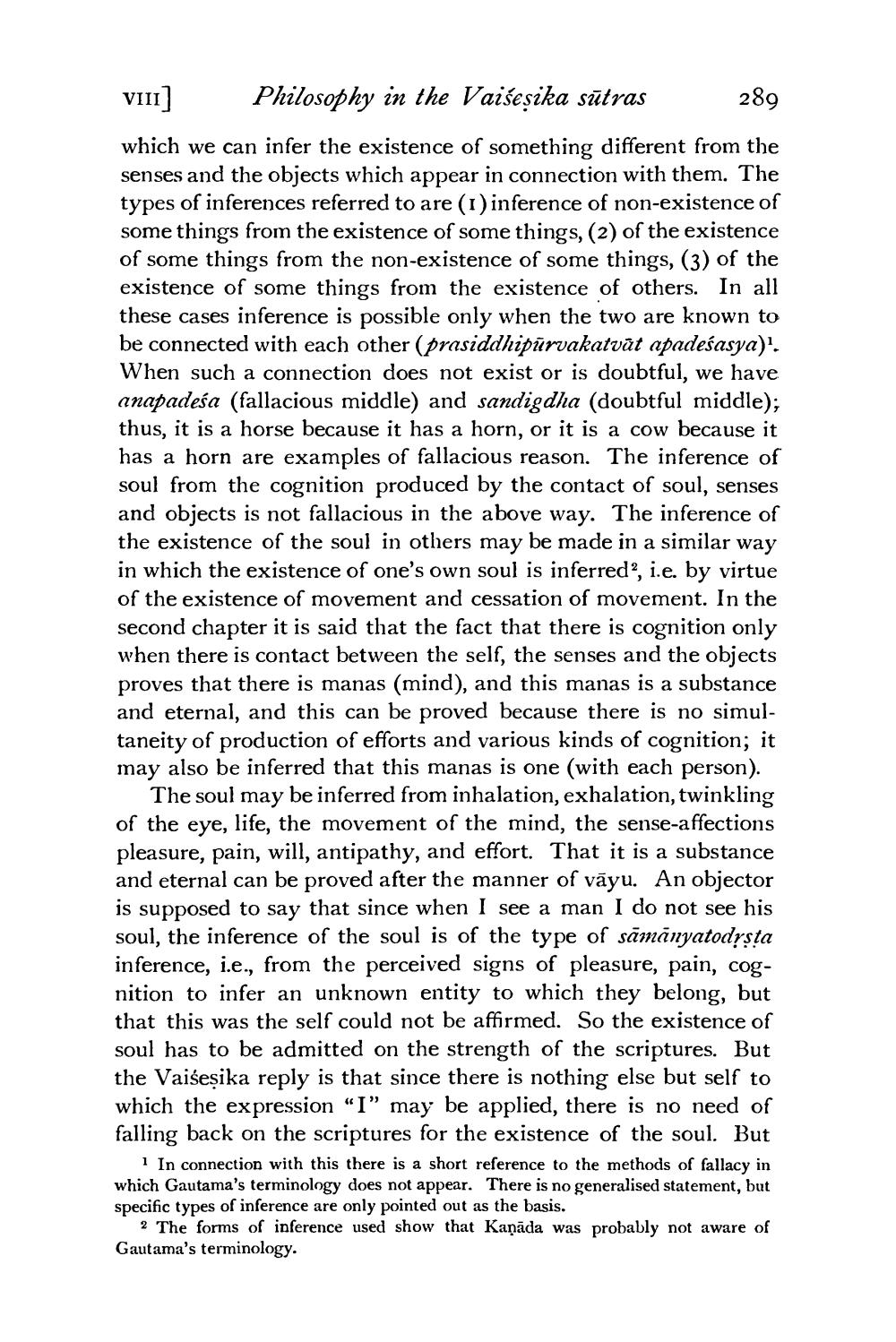________________
289
V111] Philosophy in the Vaišeșika sūtras which we can infer the existence of something different from the senses and the objects which appear in connection with them. The types of inferences referred to are (1) inference of non-existence of some things from the existence of some things, (2) of the existence of some things from the non-existence of some things, (3) of the existence of some things from the existence of others. In all these cases inference is possible only when the two are known to be connected with each other (prasiddhipūrvakatvāt apadeśasya)'. When such a connection does not exist or is doubtful, we have anapadeśa (fallacious middle) and sandigdha (doubtful middle): thus, it is a horse because it has a horn, or it is a cow because it has a horn are examples of fallacious reason. The inference of soul from the cognition produced by the contact of soul, senses and objects is not fallacious in the above way. The inference of the existence of the soul in others may be made in a similar way in which the existence of one's own soul is inferred?, i.e. by virtue of the existence of movement and cessation of movement. In the second chapter it is said that the fact that there is cognition only when there is contact between the self, the senses and the objects proves that there is manas (mind), and this manas is a substance and eternal, and this can be proved because there is no simultaneity of production of efforts and various kinds of cognition; it may also be inferred that this manas is one (with each person).
The soul may be inferred from inhalation, exhalation, twinkling of the eye, life, the movement of the mind, the sense-affections pleasure, pain, will, antipathy, and effort. That it is a substance and eternal can be proved after the manner of vāyu. An objector is supposed to say that since when I see a man I do not see his soul, the inference of the soul is of the type of sāmányatodrsta inference, i.e., from the perceived signs of pleasure, pain, cognition to infer an unknown entity to which they belong, but that this was the self could not be affirmed. So the existence of soul has to be admitted on the strength of the scriptures. But the Vaiseșika reply is that since there is nothing else but self to which the expression “I” may be applied, there is no need of falling back on the scriptures for the existence of the soul. But
1 In connection with this there is a short reference to the methods of fallacy in which Gautama's terminology does not appear. There is no generalised statement, but specific types of inference are only pointed out as the basis.
2 The forms of inference used show that Kaņāda was probably not aware of Gautama's terminology.




